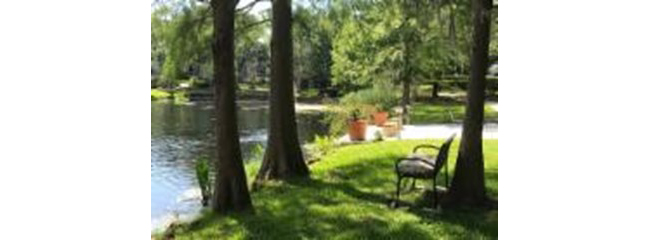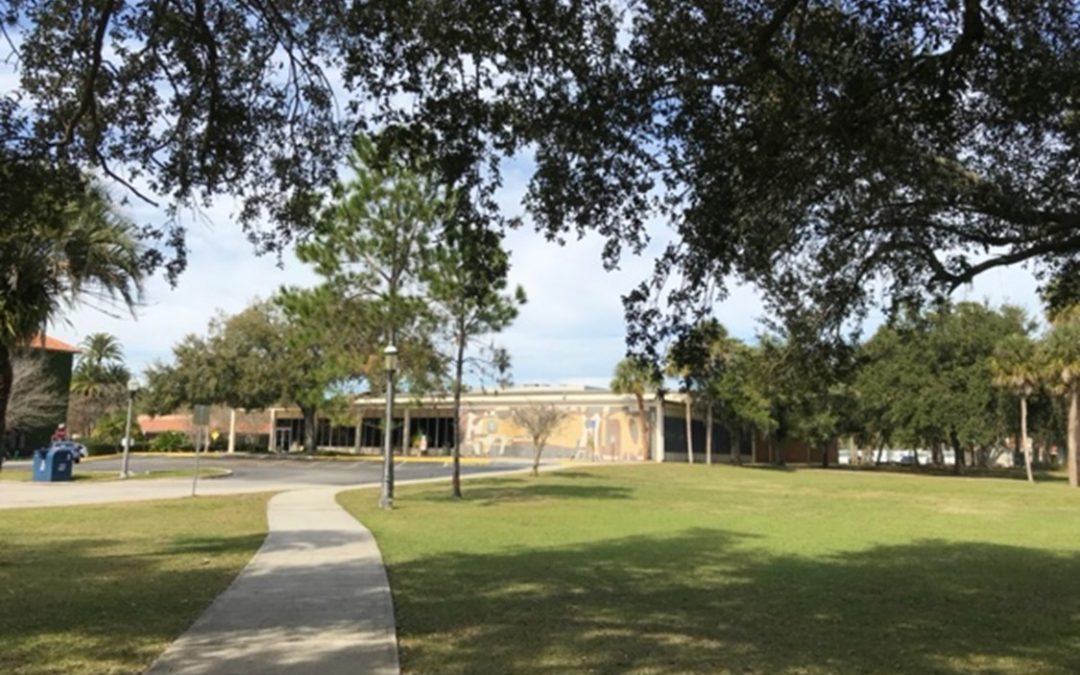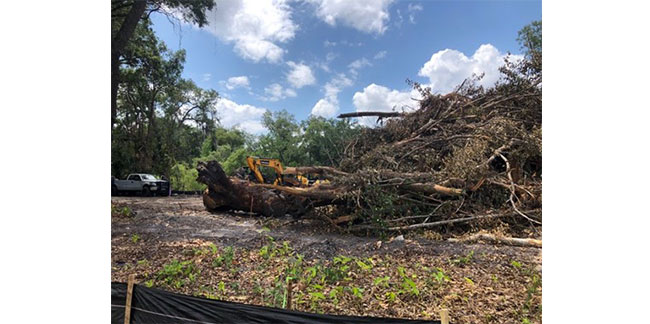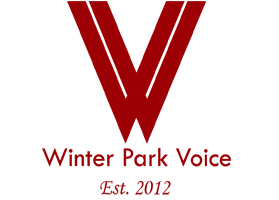
by Anne Mooney | Jun 27, 2021 | News
ARPA Funds Available to Non-Profits
Funding for non-profits that do not already receive City funding
by Anne Mooney / June 27, 2021
In May, the City announced it would receive about $13 million in COVID-19 recovery funds over the coming year. In addition to the dozen or so not-for-profit entities that already receive City subsidies, the Commission has allocated $200,000 for any 501(c)(3) in the City, subject to certain restrictions.
Application posted on City website July 1
Beginning July 1, any not-for-profit 501(c)(3) in good standing that is headquartered in Winter Park, whose annual operating expenses do not exceed $2 million, may apply for organizational funding support from the American Rescue Plan (ARPA). Applicants can begin the application process by going to cityofwinterpark.org/ARPA.
Successful applicants must have been in operation for at least the past three years. The organization must have a Board of Directors responsible for oversight, and it must provide a service. Applicants must demonstrate a detrimental impact caused by the COVID-19 pandemic.
Grants up to $25,000
This is a grant program, not a loan. The maximum amount available to each organization is $25,000 or one-half the annual operating expense, whichever is less.
The grant process is designed to assist not-for-profits in their recovery efforts and to ensure that allocations of public funds are used to offer services that can be provided to greater advantage by not-for-profit community organizations.
Non-profits already receiving City funding
ARPA funds also have been set aside for a dozen non-profits that receive annual Organization Support as a line item in the City’s budget, but those ARPA funds are separate from this $200,000 pot. The 501(c)(3)s that already receive City funding include the Winter Park Public Library, Historical Association, United Arts, Polasek, Winter Park Day Nursery, Blue Bamboo, Welbourne Day Nursery, Enzian Theatre, Winter Park Playhouse, Depugh Nursing Home and the Heritage Center (Crealde).
To comment or read comments from others, click here →

by Anne Mooney | Jun 25, 2021 | Uncategorized
Progress Point Survey
Never Asked, ‘Should We Keep It Green?’
Guest Columnist Leslie K. Poole / June 25, 2021
Winter Park today has an extraordinary opportunity to create more park space amid the metropolitan area’s sea of asphalt and development. The mayor and city commissioners are considering the future of four-acre Progress Point, an old utility department site at the intersection of Orange Ave. and Denning Dr.
Residents polled about Progress Point
In March residents were polled about their preferences for its redevelopment. Possibilities included a massive parking garage and retail space the size of a typical Publix grocery story. As if the City needs to be a landlord to companies that will compete with existing businesses.

The missing question
At no time have planners considered making the property all green space, with trees, benches, and walkways that enhance our growing need to get outdoors to de-stress, breathe and soak in nature’s beauty. Sadly, city pollsters didn’t even give residents that option.
Residents responded anyway
What the poll did show was that residents value tree shade, gardens, lawns, and native plantings as part of any design. That supports numerous national studies that show people want and love park space. It makes urban living more peaceful. It raises nearby property values. It enhances shopping and dining experiences for anyone who visits the area.
Progress Point – missing link in the Emerald Necklace
Even more wonderful, a Progress Point Park would be far more than a neighborhood space—it would be another link in a citywide necklace of “green” gems, further enhancing Winter Park’s livability. Imagine walking or riding a bike from Mead Botanical Garden to Progress Point to Martin Luther King Jr. Park to Central Park and beyond. That is a vision that few cities have—or are able to create.
As a founding trustee of the Winter Park Land Trust, which aims to increase usable park space in the city, I can report that the Trust has voted to endorse “maximum green space” at Progress Point. We must urge city leaders to reconsider current proposals that contain development.
Add more park to Winter Park
It’s time to stop and smell the roses in Central Park that make our city so unique. Ask the Mayor and Commissioners to use this once-in-a-lifetime opportunity to add more “park” to Winter Park. Our grandchildren and their grandchildren will thank us.
Leslie Poole is an award winning journalist and Associate Professor of Environmental Studies at Rollins College.
To comment or read comments from others, click here →

by Anne Mooney | Jun 22, 2021 | Zoning and Development
Keep Progress Point Green
Open Letter to Mayor and Commissioners
Guest Columnist Charley Williams / June 22, 2021
Over 360 folks signed our online petition.
‘We, the undersigned residents of Winter Park, envision a once-in-a-lifetime opportunity to increase greenspace as the city considers the future of Progress Point. We believe the highest and best use is a 4.4-acre park with shade trees, walking paths and benches where residents can escape their homes and enjoy relief from the concrete urban chaos of today’s world.
Even better, the park would link Mead Botanical Garden and Martin Luther King, Jr. Park, offering greater recreational opportunities for those who want to explore the city without a car. There is a national push for every American to have a park within a 10-minute walk. This greenspace can help us reach that goal.
Surveys across the U.S. show that we want and need more park space. Once paved, these limited assets are lost forever. We ask for your stewardship and protection of this unique city-owned parcel for generations to come.’
Sharing some of the comments we’ve received:
“The re-wilding of this property would put Winter Park on the map internationally for all the right reasons.
“Florida has less park space per population than any other state.”
“Green space is our most important asset.”
“This is a rare opportunity, and there may not be too many more.”
“The neighborhood needs green space. Look kitty-corner across the street (across the railroad tracks and opposite the playground), where there once stood two houses is now a cluster of rental houses. The neighborhood wanted community gardens there. Instead, we got an extension of Rollins. No more development.”
“Winter Park needs more open green space to balance the ratio of people and the spaces they need outside their homes.”
“Green space is essential to life.”
“Winter Park deserves more green spaces.”
“The Charm and Beauty of Winter Park is the beautiful parks and gardens. Please do everything to preserve the natural beauty of Winter Park.”
With continued appreciation, in community.
To comment or read comments from others, click here →

by Anne Mooney | Jun 20, 2021 | News, Taxes, Zoning and Development
Open Letter to Current Mayor & Commissioners
Do not blow this opportunity again. Now is the time for the Post Office!
Guest Columnist Sally Flynn / June 20, 2021
 On June 9, the Orlando Sentinel published a letter from six former Winter Park mayors cautioning the current Winter Park Commission against acquiring the Winter Park Post Office property for the purpose of expanding Central Park.
On June 9, the Orlando Sentinel published a letter from six former Winter Park mayors cautioning the current Winter Park Commission against acquiring the Winter Park Post Office property for the purpose of expanding Central Park.
I do not care what these past mayors think about how we should spend our money, and I don’t believe most Winter Park citizens do, either.
In 1886, When Charles Hosmer Morse deeded the land that is now Central Park to the City, that deed came with a restriction protecting the park from commercial use or development. For 135 years, Winter Parkers have honored that restriction and have taken pride in enhancing and expanding the park.
Protecting the Park
Over the years, City leaders have created a web of local ordinances to protect the park. In 1999, a citizens’ initiative put in place a prohibition to keep the City from building on land in or adjacent to Central Park. In 2009, the height of properties affecting the open vista of Central Park was limited to two stories. In 2011, the downtown area that includes Park Avenue, Central Park and the Post Office was placed on the National Register of Historic Places. In the 2016 Visioning process, Winter Park residents stated unequivocally that one of their top priorities is the expansion of green space within our community.
City has long history of effort to acquire the Post Office
In 2014, then-Congressman John Mica arranged a meeting with the U.S. Postal Service (USPS) and the City, and a series of productive negotiations commenced. The USPS agreed to allow their facilities to be separated between a downtown retail facility and a separate distribution facility. This made the project more affordable and was agreeable to both the City and USPS.
USPS was willing to move
By January 2015, negotiations had progressed. USPS Vice-president of Facilities wrote in response to City Manager Randy Knight’s suggestion of a particular site, “Randy, after completing a few layouts, we believe that the site has high potential of working for us (subject to a 30% design). I think you should proceed with your discussion with the City Council.”
City stalls negotiations
Instead of following the USPS V.P.’s recommendations to continue discussions at the Commission level, however, staff prepared an agenda item recommending the Commission delay negotiations and, instead, prepare a notice of disposition to sell Progress Point and use the proceeds to purchase the Post Office. Mayor Steve Leary moved to cease negotiations with the Post Office; his motion passed on a 3-2 vote.
CRA funding becomes available
Fast-forward to October 28, 2019, when the City Commission voted 5-0 to execute a Resolution in support of acquiring the USPS property to expand Central Park, dedicating this land to park use in perpetuity. In January 2020, the Community Redevelopment Agency (CRA) voted to allocate funding for the Post Office acquisition in the CRA Capital Improvement Plan.
On January 27, 2020, the Commission voted to direct the City Manager to move forward to negotiate and execute a Letter of Intent to buy the Post Office Property. The City now has funds budgeted for FY 2021 and FY 2022 to bring this project to fruition.
Now is the time
Our CRA is scheduled to go out of existence in 2026. After that happens, putting together the necessary funds to acquire the Post Office property will be very difficult, if not impossible. Now is the time for our City to show it has the courage of its convictions: now is the time to act.
To comment or read comments from others, click here →

by Anne Mooney | Jun 5, 2021 | Tree Canopy, Zoning and Development
Howell Branch Chain Saw Massacre
by Anne Mooney / June 5, 2021
Once again, 1298 Howell Branch Road is in the news. There is no memory care facility this time, just four lots for single family homes. Sound simple? We’ve been here before.
Developer changes course in 2017
After the Villa Tuscany Memory Care Center failed in 2017 to receive approval, the developer, Villa Tuscany Holdings, LLC, revised its request and received City approval to divide the property into four single-family lots under the current R-3 zoning. The 3.77-acre property, of which only 2.09 acres is buildable because that is the portion above the Ordinary High Water elevation of approximately 66 feet, is located between two bodies of water. The larger to the south is Lake Temple; to the northeast is an unnamed sinkhole.
Four lake-front lots planned
Since all four are lakefront lots, new home construction must be reviewed and approved by the Planning & Zoning (P&Z) Board. The P&Z review focuses on tree preservation, storm water management, making sure plans are compatible with the grade of the lot and maintaining lake views. Each individual plan involves a negotiation with Urban Forestry Department, especially if a specimen tree is involved.
Developer begins work in May 2021
When the developer obtained a permit to begin work on the property in May, a 54-inch oak tree was to be preserved. In addition, a silt fence was erected to prevent clearing along a 50-foot margin from the lakefront to protect neighbors from noise and light pollution from Howell Branch Road.
54-inch oak takes the fall
On May 14, according to Parks and Recreation Director Jason Seeley, who oversees the City’s Urban Forestry Department, a subcontractor arrived with heavy equipment to clear the land. As the clearing began, the crews, unsupervised by the developer, proceeded to take down the silt fence, clear all the way to the lake front and cut down the large specimen oak.
Even after a Stop-Work order and a Code Violation were issued, City staff observed the contractors continuing to clear the land. The City contacted the developer directly, the Stop-Work order is still in place and work on the premises has halted.
Draft tree preservation ordinance planned
A draft Tree Preservation Ordinance has been approved by the Tree Preservation Board and is awaiting review by P&Z in July or August. Changes contemplated include a matrix that uses a range of species, conditions and sizes to generate a mitigation number. Mitigation is strengthened in some areas. For instance, the ordinance proposes separating residential from commercial and increases mitigation requirements for trees on residential property.
Most trees lost to residential development
We lose more trees to residential development than we do to commercial,” said Jason Seeley. “The biggest impact on trees over time is with residential development and building codes. When a small house is torn down to build a McMansion, we lose about 60 percent of available space for plantings on those residential lots. You just can’t plant your way out of that problem.”
Commissioner Sheila DeCiccio pointed out how important it is for alert residents to keep the City informed. “We have a very small Urban Forestry staff,” she said, “and they can’t be everywhere at once. In the case of the Howell Branch property, City staff was responding to neighbors who reported unpermitted activity on the site.”
In an email blast sent June 1, DeCiccio wrote about the proposed tree preservation ordinance. “This revision has several more steps to go through before it reaches a final form to be voted on by the City Commission,” she wrote. “The ultimate aim is to codify an easy-to-understand mitigation / compensation scheme reflective of the value that the citizens of Winter Park place on their trees.
“The tree canopy is an integral part of what makes Winter Park so special. The more we know, the better we can protect this precious resource.”
To comment or read comments from others, click here →








Recent Comments